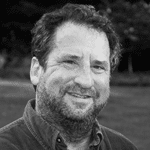My interest in the environment and green buildings began back in the late 1970s—in college for me. We had an energy crisis, and it became front and center during the Carter administration. As a result of that, I did a lot of work, a lot of research and schooling on these things. That’s where I caught the bug, and it never left me.
Being a part of a family business—and that we’ve been able to do this now for three generations—is certainly a source of pride. Over the past 85 years we’ve built a portfolio of residential, mixed-use, and retail. Some we manage, and some we’ve built. Frankly, a portion of those buildings need fixing, so I’ve been doing a lot of research and planning on that and how to facilitate that process.
I don’t see us leaving urban development as an area of expertise. A good 98 percent of the work we’ve done has been in NYC. As the population grows, zoning changes and opportunities still exist to redevelop sites, and that’s what we specialize in: brownfield sites and new development. It keeps us busy, and yes, we see a future in it.
The mixed-use project on 161st street in Jamaica, Queens, is for the Greater Jamaica Development Corporation, a nonprofit organization that’s headquartered next to the project site. They are trying to foster development in the area and on occasion they identify parcels of land that they own and want to see a certain type of development happen. Portions of the residential building are dedicated for low-income tenants, some portions are for working-class families or workforce housing, and a percentage is dedicated for market-rate housing. Every tenant gets a similar apartment, and they are intermingled throughout.
One of the critical factors for us being selected [for the project] was that we also made the commitment to use a portion of the building as our headquarters. So our staff and our office, our whole operation is moving there. We told them we were making a commitment not only to the building but also to the area. We’ll be out in the area, going to the stores, buying food, taking our lunch breaks—helping the community commerce.
One of the things that has worked out well has been [our] use of insulated concrete form systems; you end up with a really strong, airtight and watertight wall with a lot of insulation. They give us incredible reductions in our heating and cooling at really no extra cost. We’ve also been rethinking how we ventilate. Instead of putting large fans and shafts on the roof to take away stale air, the new concept treats each dwelling unit or apartment as its own small building. We do a lot of air sealing and then ventilate sideways through the apartment using small fans and small ducts. It uses less energy and the stack effect to heat and cool efficiently.
We are now going to use mini-split air-source heat pumps in every apartment for the Greater Jamaica Development Corporation project. These small, central systems will create more comfort and the system will be quieter and give the tenants more individual control at lower costs because of the tight envelope of the building.
One person to whom I want to give credit is Henry Gifford. He has a more unique and intuitive approach to designing than many licensed engineers out there, and he’s been key for me. He’s teaching me a lot, and we’ve been busy measuring things like the heat pumps that we’ll use in this project. Henry’s been an important part.
GF55 Partners are people that we get along well with; they listen, and we’ve done a lot of successful projects with them. They were the architects on our first extremely green building. We told them what systems we wanted to use and they helped us to package it all.
 Steven Bluestone is one of the five managing owners of The Bluestone Organization, a third-generation family business that builds, develops, and manages buildings in the New York City area. Steven’s personal interest in the environment dates back to the 1970s and can be seen in the home he and his wife designed and built 13 years ago, where they still live today.
Steven Bluestone is one of the five managing owners of The Bluestone Organization, a third-generation family business that builds, develops, and manages buildings in the New York City area. Steven’s personal interest in the environment dates back to the 1970s and can be seen in the home he and his wife designed and built 13 years ago, where they still live today.

